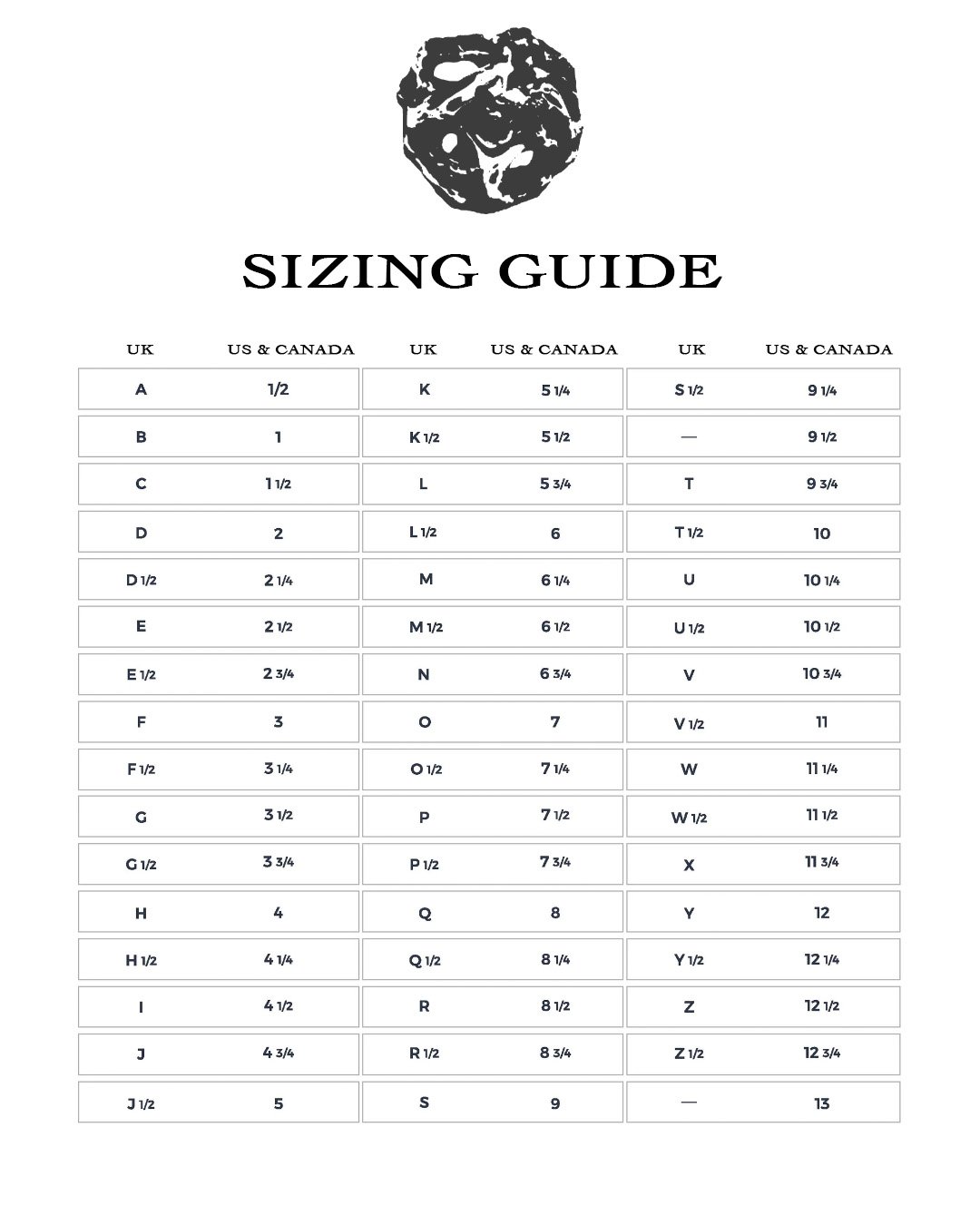THE ULTIMATE RING SIZE GUIDE
When it comes to buying rings, especially a ring for a special occasion, it is essential that you choose the right size. We’ve have put together some useful advice about ring sizes, along with a UK ring size chart, to help you make the right choice.
WHAT IS RING SIZE?
Rings are measured according to the circumference of your finger. Rings should fit snugly, not too tight that they feel uncomfortable or not so loose that they can fall off!
HOW DO YOU MEASURE RING SIZE?
There are a couple of main ways that you can measure your ring size. Jewellers will also have ring sizers (and these can be bought online) but there are some straight forward ways to find out your ring size. We recommend measuring between three to four times to ensure you are accurate.
MEASURE YOUR RING SIZE WITH STRING OR PAPER
Start by wrapping the string or paper around the base of your finger. Mark the point where the ends meet with a pen. Measure the length with a ruler in millimetres. Then check the chart to find the closest measurement. This is your ring size! If your knuckle is bigger than the base of the finger, measure both and choose a size in between. You can also download and print out our ring measuring guide - it’s even easier to use than the string or paper!
WHAT ARE THE AVERAGE RING SIZES IN THE UK FOR MEN AND WOMEN?
When it comes to wedding or engagement rings – the third finger of the left hand – the average woman's ring size is L ½. For men, the average ring size is Q.
WHAT ELSE DO I NEED TO CONSIDER? TOP TIPS FOR MEASURING RING SIZE
There are other environmental and physical things that can affect ring sizes. Here are a handful of tips that might help you size it right!
● The best time of day to measure your ring size is in the evening. Most people’s fingers tend to be larger in the evening and slimmer in the morning.
● If you are choosing a ring with a deep bandwidth, it may feel tighter so you may need a slightly larger size. Rings with large stones may also ‘lift up’ when they are laid on their side, so you may also need a larger size.
● Fingers can react to temperatures. When it is warm, they tend to swell and when it is cold, they will shrink. Avoid measuring your ring size on a particularly cold or warm day.
● If you are between two sizes, it is always advisable to go up a ring size.
● The dominant hand tends to be a little bigger, so if you are right-handed, for example, the third finger on your right hand may have a slightly larger ring size than your left hand.
● Other factors can affect ring size include exercising, water retention, pregnancy, ageing and weight change.



